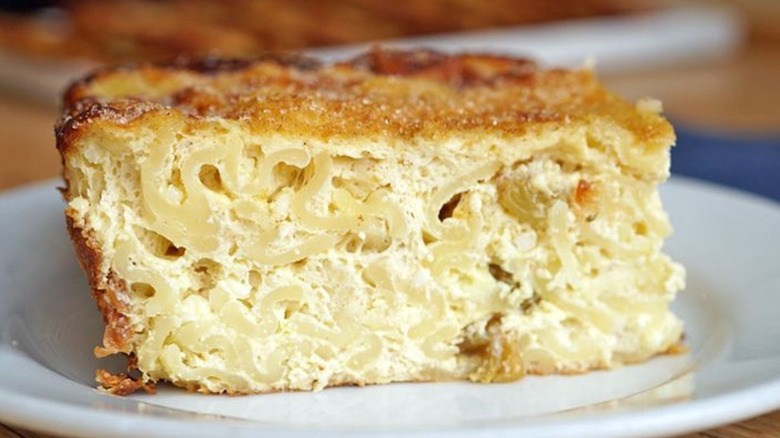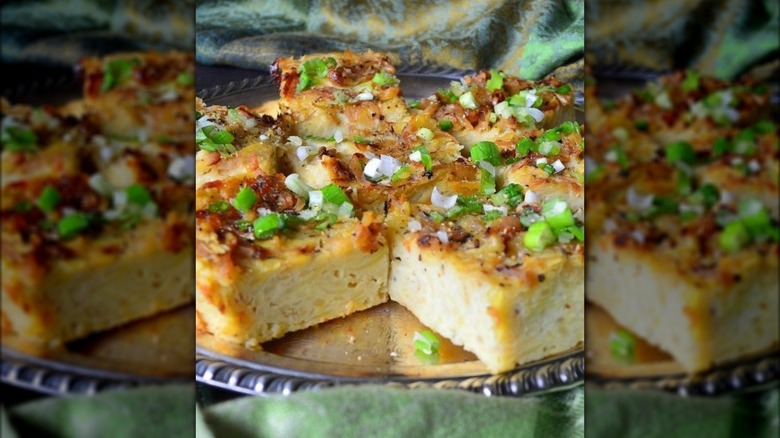How Kugel Has Evolved Since Its Creation
When you're invited to a festive holiday meal at a Jewish household, there's a really good chance that kugel will be on the menu. While the reasons for this are many, they can ultimately be distilled down to two simple facts. First, kugel is uber-traditional for Jewish people; it has been around in some form or another since the tenets of modern Judaism were first being formulated, according to Chabad. Second, kugel is a total crowd-pleaser. People just love it, Jews and non-Jews alike. And those two facts go together quite intentionally.
You see, kugel's earliest iteration, a dish known as pashtida, was meant to resemble the miraculous manna from heaven that sustained Jews while they wandered the desert for 40 years in ancient times. The way that the Jewish comfort food is described by Chabad, it sounds a lot like a shepherd's pie, but with a bottom crust as well as a top one. Since eating it was considered an auspicious act, it was meant to be enjoyed. And enjoyed it has been for two millennia and counting — though certainly not without some evolution over time.
Kugel has evolved to keep making people happy over the centuries
Over many centuries, kugel has evolved from what was essentially a meat pie to what is now, in most cases, a non-meat dish composed of eggs, fat, and starch — not unlike French toast, bread pudding, or Italian strata. That doesn't mean that kugel cannot ever contain meat or dairy (eggs are not considered dairy in the Jewish religion, per Chabad), although it can never contain both meat and dairy because that would stand in opposition to Jewish dietary laws. Between its initial creation and now, cooks made changes to kugel based on what was available and appealing at the time. For example, as sugar grew in popularity in 17th-century Europe, sweet kugels such as noodle kugel started appearing on Jewish tables. After potatoes became popular in the 19th century, they became the starch of choice for savory kugels, according to Jewish culture blogger Jamie Geller.
When Jews emigrated from Europe to the U.S., they brought this beloved traditional dish with them and called it kugel, which means "ball" in German, a reference to the round earthenware pot in which it was traditionally cooked. As Jewish and American tastes evolved, so too did kugel. Nowadays, kugel comes in all sorts of varieties, from apple-noodle or broccoli-potato to spinach, cauliflower, and potato kugel, says The New York Times.

